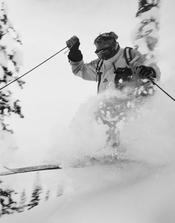It happened this summer below Sonora Pass. Got up really early and headed downhill for early morning light at low altitude. No use - all the lenses instantly fogged, and I didn't want to wait another 20 min for them to clear up. Had to beat the PM commute traffic here in the Bay.
That route has recently be repaved, but there are still only a few straight sections on it. One year I was backpacking with a fellow who worked in the Service Dept of a Porche dealership. On the way downhill we passed a trio of father and two sons parked along the road, each with his own sportscar. One son had a Viper and another a Ferrari. But the father had a carbon fiber $800,000 Porsche that my pal claimed was only one of three in the entire nation. He said it had a unique sound almost like an Indy car, and wanted me to hear it. So when they started catching up to us, I slowed way down just to frustrate them on the winding narrow road as long as possible. Then that straight stretch showed up, and VROOOOM, vroom, vroom, all these went past at over a 100mph in probably just third gear. That's where it got interesting ....
There was an intersection right there too, with a Highway Patrolman at it. He just sat there staring with his mouth open; and then he seemingly thought to himself, This is the only opportunity in my life to bag something like that. So past me he went, and many miles further downhill after another long winding stretch clogged with logging trucks, he finally caught up with all three of them.







